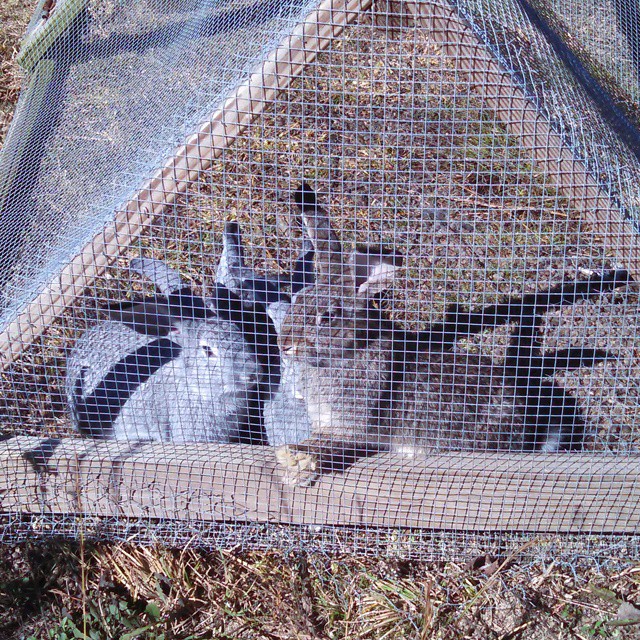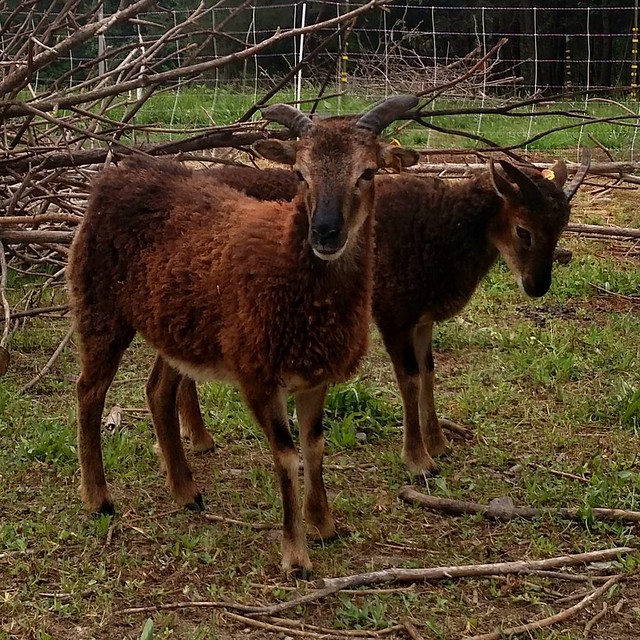By Andrea Chandler
Back in the 19th century and even into the early 20th, before mechanization made it possible for one person to harvest an entire field of corn in solitary splendor, heavy farm labor was often a social affair. The community was built at dances and potluck suppers held in conjunction with corn shucking, making syrup from maple sap and sorghum crops, shearing the sheep, and an assortment of other farm events that were relatively time-sensitive and needed to be done quickly. These days the tradition persists on small farms like mine, where the tiny size means mechanization isn’t an efficient option. It also offers a chance for people who possibly can’t afford to pay cash for premium heritage foods to barter their labor instead, benefiting the farmer, the livestock, and the families who come to help out.
I’m lucky to have good friends who are willing to barter their labor in this fashion. They show up to help dig over garden beds, clean the goat barn, move hay, trim hooves, harvest small livestock, and soon they’ll get to show up to help with the shearing. In return, I’m able to offer them products of the farm: meats, vegetables, fleeces, feathers, hides. They are a hard-working group of dedicated helpers, essential to my ability to be productive, but also beloved friends.

Young rabbits in the grow out pen
My friend Ruth, an information scientist in DC, found her second calling helping me slaughter and butcher the livestock I raise for meat. She’s helped out with everything from rabbits to a goat to a duck. When I asked her how she felt about helping with slaughter days, she said “I feel very different about eating meat from these animals than I do about eating meat I’ve bought from the store. I saw this animal living in decent conditions and being the kind of animal it’s supposed to be, along with its peers. I made its end as swift and humane as possible. I cleaned it in a way that produced the most possible food for both humans and animals. So when I’m eating it, I feel both a sense of accomplishment and a relief from the nagging concerns I always feel around buying factory-raised meat.”
Liz, who I originally met when I convinced her to take in a feral cat I’d trapped, finds the elements of community especially important: “I find it incredibly satisfying, on so many levels, to have found a way to contribute to a community I care about, helping in whatever tiny way to provide a livelihood for a friend, getting excellent food for my family at a price I can afford, and ensuring that those food animals had the best lives they could in the process. The camaraderie of the activity, the ongoing communication amongst us all, and knowing that all of us are working with one another to make a difference in this way for each other is really just wonderful.”
Sarah has helped out with diverse farm events ranging from benignly digging over a garden bed to coming along on a four hour road trip to help me pick up sheep. For her, the environmental and social benefits go hand-in-hand. “I try not to get too emotional about meat because then I just end up eating vegan for the next 3 weeks but there’s less guilt about how delicious [the animals] are. I also like to think about the environmental and social benefits. Like, barring the 2 hour drive it takes me to get to your place, here’s a meal with a lower carbon footprint than others. I know that the waste produced is being used ecologically and not running off into the Bay or other waters. I like that I’ve made new friends! It also adds to my workplace “weirdo points.” Nothing like telling your other urban dwellers that you spent the weekend slaughtering rabbits and shoveling goat poop.”

Soay sheep hard at work growing wool.
It’s also not coincidental that the friends who help me out are women. As the movement towards increased self-sufficiency and developing local foodsheds gains momentum, women tend to be at the forefront. While our husbands certainly help out, I’ve noticed we tend to be the brains behind the operation, making decisions about what to raise and grow, if not actually staying home to raise the animals, weed the garden, and preserve the harvest by canning, fermenting, and drying it. It’s an aspect of the movement that harks back to the social days of farming, when men were in the fields and women tended the small livestock and gardens at home. In doing so, we build diverse and supportive networks among ourselves that allow us to barter for what we can’t produce on our own and access a depth of collective knowledge and experience that we’d otherwise be lost without.
While we can’t abandon industrial farms entirely if we want to feed the nation, it’s reassuring to know that on tiny farms like mine, the social tradition survives and benefits more than just the farmer. While the media periodically warns us about how social media such as Twitter and Facebook isolate us behind screens, many of us are turning it to building these kinds of communities. Living out here in the rural Piedmont, my friends and I use Twitter to coordinate farm days, share our triumphs and sadness, and otherwise remain a tight-knit group of friends even though we can’t sit down for sweet tea on the porch as often as we’d like. It’s a warm, fuzzy feeling.
Andrea Chandler is a disabled Navy veteran who is living the dream on a tiny farm in the Piedmont. In her spare time she reads everything she can get her hands on; spins, dyes, and knits her own yarn; makes soap and lotion from goat milk; and wages an endless battle with the squirrels who raid her garden. You can find her on Twitter as @civilwarbore.

Leave a Reply